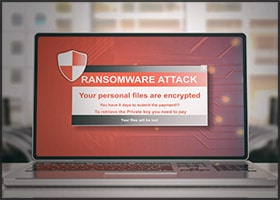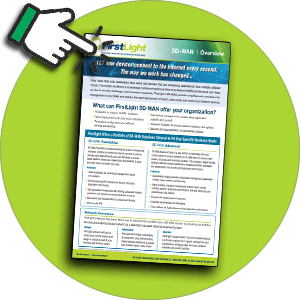
The healthcare industry has been the target of cyberterrorism in the past, suffering attacks from both activists and foreign governments. In 2018, The U.S. Department of Justice announced the indictment of two individuals who staged ransomware attacks against hospitals and local governments across the country. These attacks occurred from 2015 to 2018 and cost 200 victims over $30 million.
Attacks on medical centers and hospitals do more than cost money and compromise data. These attacks put patients in danger by potentially encrypting essential electronic health records (EHRs) and rendering medical devices that rely on software inoperable.
Defending against today’s sophisticated attack vectors requires that healthcare organizations take advantage of cloud and network security solutions.
Foiling Ransomware Attacks
 Hackers who use ransomware see healthcare organizations as attractive victims because of the urgency of medical work. Cybercriminals believe that hospitals would rather pay a ransom for a decryption key than spend time working to get their systems up and running again. The hours, days, or even weeks that pass before a solution can be reached might mean sacrificing lives.
Hackers who use ransomware see healthcare organizations as attractive victims because of the urgency of medical work. Cybercriminals believe that hospitals would rather pay a ransom for a decryption key than spend time working to get their systems up and running again. The hours, days, or even weeks that pass before a solution can be reached might mean sacrificing lives.
Ransomware attacks have intensified to the point where the malware is automatically deleting on-site backup files. This evolution in the ransomware attack vector has made cloud-based disaster recovery the best solution for protecting healthcare providers.
With disaster recovery as a service (DRaaS), hospitals and medical centers can instantly fail over using the cloud as a DR site. Using hybrid cloud enables hospitals to sync their data center with a cloud data center for backup and replication to eliminate data loss after an attack. Off-site backup files stored in the cloud are much less likely to be impacted by hackers.
Defending Against DDoS
Distributed denial of service (DDoS) attacks are another attack vector that can cripple a healthcare organization. A DDoS attack inundates the network with queries, disrupting or shutting down operations and making it impossible for authorized users to access the system.
This type of attack makes healthcare workers unable to access payroll or EHRs. Medical equipment, such as MRIs, EKGs, and infusion pumps could cease operation. IoT devices used to monitor patients are unable to gather and transmit information about health status.
Defending against a DDoS attack requires more than using a firewall, intrusion detection system (IDS), or intrusion prevention system (IPS). DDoS attacks can fool these systems or penetrate the perimeter through ports in a firewall used to admit legitimate traffic. Furthermore, once the traffic hits the firewall it already has the potential to overwhelm the bandwidth available on the connection.
Instead, healthcare providers need to use a DDoS prevention and mitigation solution. A solution designed to fight DDoS will monitor traffic continuously and work to recognize the anomalous activity associated with DDoS, keeping the attack from saturating the network while simultaneously allowing legitimate traffic to pass through.
Securing the Network
 To protect themselves against today’s attack vectors, healthcare providers must promote network security. Healthcare data needs to be protected while in transit, as well as while at rest.
To protect themselves against today’s attack vectors, healthcare providers must promote network security. Healthcare data needs to be protected while in transit, as well as while at rest.
Software-defined WAN (SD-WAN) optimizes the management and security of the wide-area network through a single console. Healthcare IoT devices, telecommunications, and the cloud can maintain flexible and secure connections through SD-WAN. Users, devices, and applications are all protected using analytics and threat intelligence.
Protecting Data in Flight
When medical data is in transit between healthcare team members or between EMTs in the field and the hospital, it is vulnerable to being intercepted, corrupted, or stolen. Encrypting the data while in transit can slow its transmission, making it difficult for healthcare providers to make decisions based on real-time information.
Encrypted wavelength solves this problem by providing low-latency encryption. Data is encrypted at the transport layer, allowing for optimal network performance. Information is always protected wherever it is stored or transmitted.
One-Stop Shop for Healthcare IT Security
Ideally, a healthcare provider should be able to find all the security tools it needs in one place. A comprehensive security solution is more reliable and easier to manage.
Healthcare organizations in the Northeast region can rely on FirstLight for security solutions designed to meet the challenges of the industry. We have a long track record of working with hospitals and medical centers and have continued to expand our offerings to include exciting new options for data and network security.
FirstLight has teamed up with Cisco to provide an SD-WAN solution that allows centralized management and monitoring of the wide-area network. We have also branched out into encrypted wavelength for more efficient encryption of medical data in transit, as well as DDoS Mitigation services.
These solutions supplement our DRaaS and encrypted cloud storage offerings that provide defenses against ransomware, malware, and other types of breaches.
Find out more about how FirstLight SD-WAN can protect your healthcare information. Read our SD-WAN Overview.





















